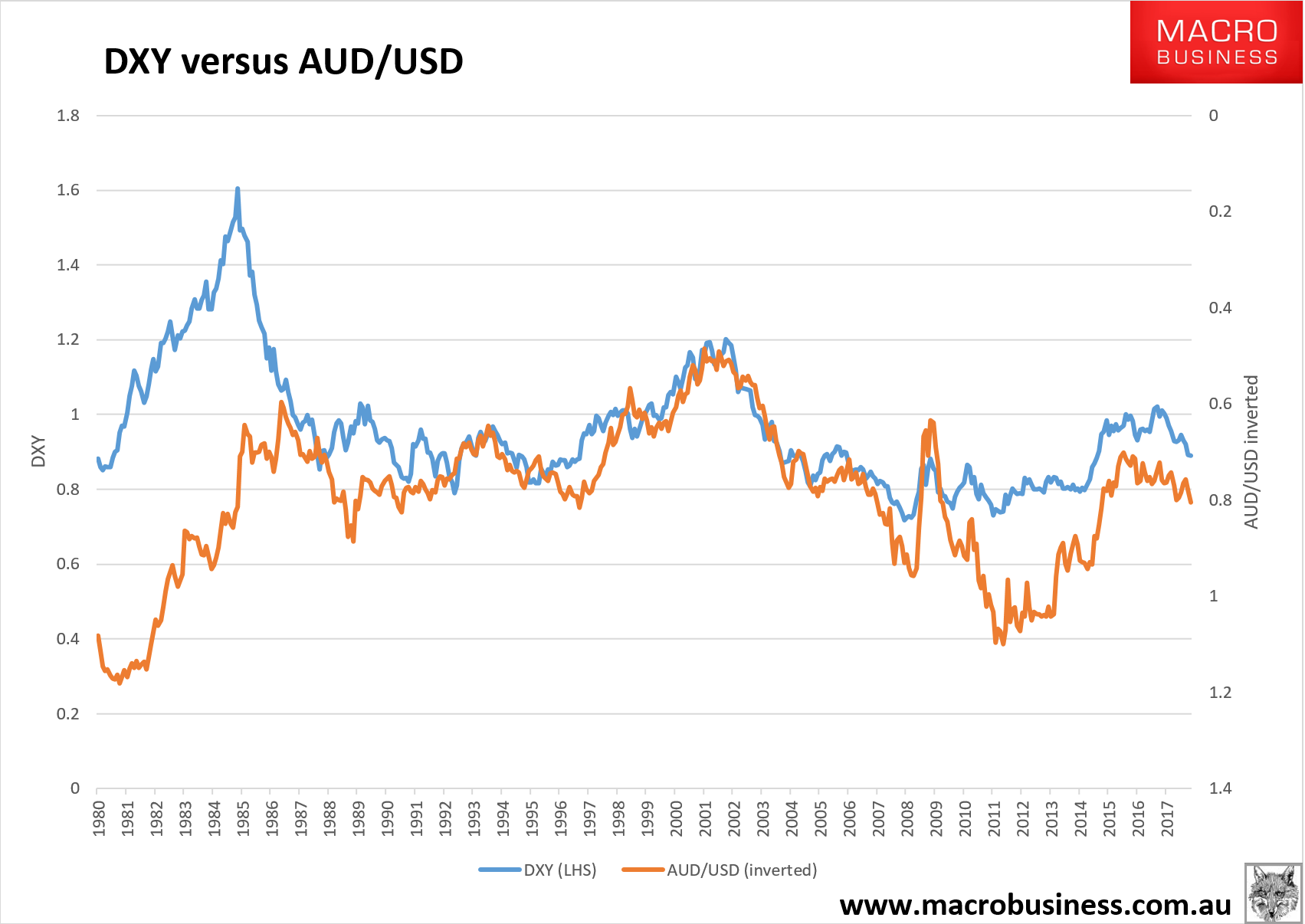Deutsche has a good summary of US dollar weakness:
Blame the dollar on yields
We are well into 2018 and our feedback from recently attending the TradeTech FX conference in Miami is that the market is still struggling to understand or embrace dollar weakness. How can it be that US yields are rising sharply, yet the dollar is so weak at the same time? The answer is simple: the dollar is not going down despite higher yields but because of them. Higher yields mean lower bond prices and US bonds are lower because investors don’t want to buy them. This is an entirely different regime to previous years.
Dollar weakness ultimately goes back to two major problems for the greenback this year. First, US asset valuations are extremely stretched. As we argued in our 2018 FX outlook a combined measure of P/E ratios for equities and term premia for bonds is at its highest levels since the 1960s. Simply put, US bond and equity prices cannot continue going up at the same time. This correlation breakdown is structurally bearish for the dollar because it inhibits sustained inflows into US bond and equity markets.
The second dollar problem is that irrespective of asset valuations the US twin deficit (the sum of the current account and fiscal balance) is set to deteriorate dramatically in coming years. Not only does the additional fiscal stimulus recently agreed by Congress push the fair value of bonds even lower via higher issuance and inflation risk premia effects, but the current account that also needs to be financed will widen via import multiplier effects. When an economy is stimulated at full employment the only way to absorb domestic demand is higher imports. Under conservative assumptions the US twin deficit is set to deteriorate by well over 3% of GDP over the next two years.
The mirror image to all of this is that the flow picture into both Europe and Japan has been improving dramatically anyway. We have previously written about the positive flow dynamics in Europe as the flow distortions caused by extremely unconventional ECB policy are starting to adjust. But the Japanese basic balance has also shot up to a 4% surplus in recent years helped by a big improvement in the services balance (Chinese tourists) and a collapse of Japanese inflows into the US: treasuries simply do not provide enough duration compensation any more. To conclude, embrace dollar weakness, it has more to run.
My own view is similar to this if a little more nuanced. When US growth is strong, capital tends to flow outwards to EMs and other risk assets chasing boom-level returns. It happened in 2006-8 too as US rates lifted.
The difference this time is we have a slowing China and commodity oversupply. As explained in last week’s webinar, this is likely to intensify as the year rolls on. Thus the Australian dollar is caught in a tug-of-war between the positive monetary flows of a falling USD and the deteriorating fundamentals for bulk commodity prices.
The question, then, is can the AUD fall when the USD is also weak? The answer is yes. Here’s the history of the AUD/USD cross (inverted) versus the broader US dollar index which is basket of currencies (DXY):

It’s unusual for the two to converge but it does happen. During the late eighties and early nineties both currencies lifted together. Most pointedly, the AUD rose much more post-GFC than the DXY fell. Indeed, post 2005 is the most sustained period of divergence since the AUD float. The China and bulk commodities booms is the obvious reason.
So, if China does slow through this year, and iron ore plus coking coal fall materially as I expect, there is every reason to expect that the AUD will fall too, even against a weak USD.
————————————
David Llewellyn-Smith is chief strategist at the MB Fund which is currently overweight international equities that will benefit from a weaker AUD so he definitely talking his book (or Westpac is!) Fund performance is below:

If these themes interest you then contact us below.
The information on this blog contains general information and does not take into account your personal objectives, financial situation or needs. Past performance is not an indication of future performance.

